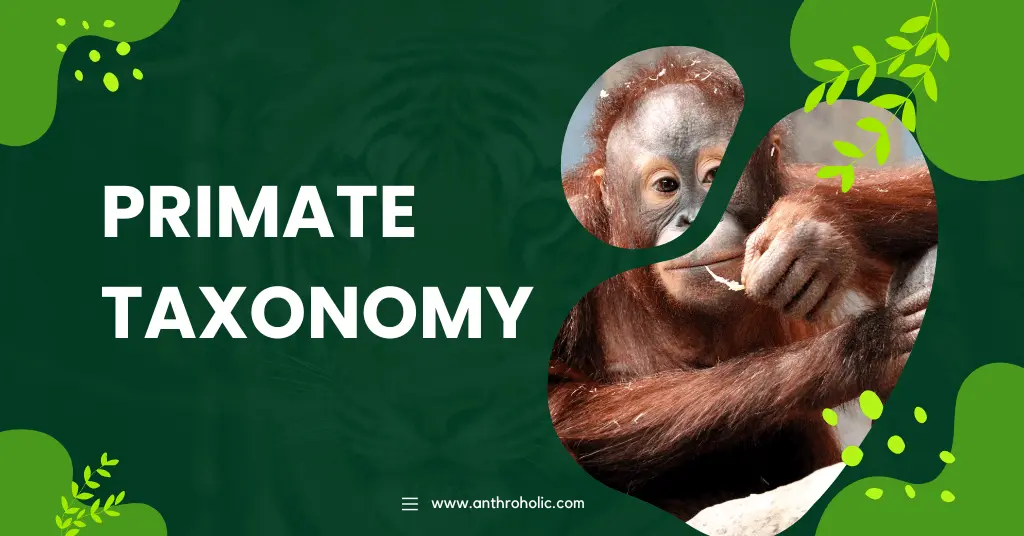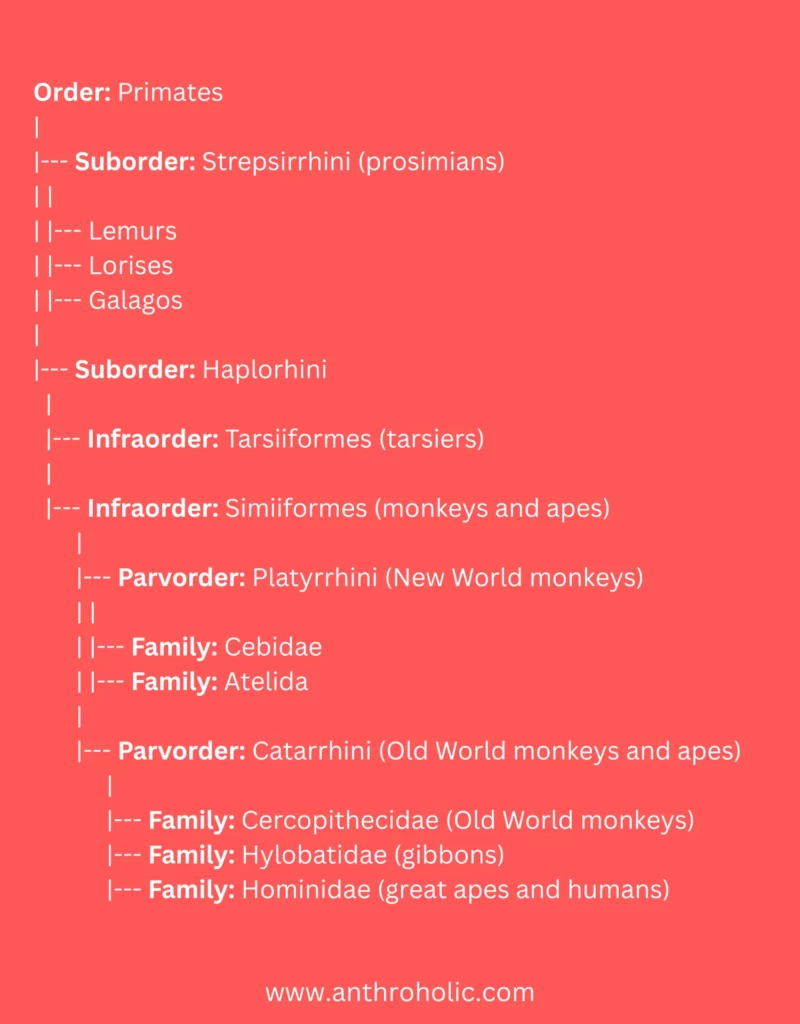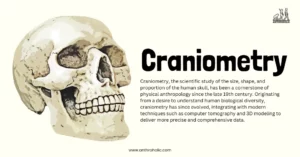AI Answer Evaluation Platform Live Now. Try Free Answer Evaluation Now
Primate Taxonomy
As part of the animal kingdom, primates belong to the class Mammalia, encompassing all mammals. From here, the primate order, or Primates, further bifurcates into two distinct suborders: Strepsirrhini and Haplorhini. These suborders encapsulate a rich diversity of species, each with its unique adaptations and evolutionary trajectory.


Suborder: Strepsirrhini
Strepsirrhini, commonly referred to as:
- Prosimians
- Encapsulate lemurs
- Lorises
- Galagos
Prosimians are considered more primitive primates, demonstrating several features similar to early mammalian ancestors. This group is characterized by a wet nose or rhinarium, similar to what can be found in dogs and cats. The term ‘Strepsirrhini’ itself means ‘curved nose,’ referring to this feature.
Strepsirrhines are typically smaller in size compared to other primates and have a more prominent reliance on their sense of smell. In many strepsirrhine species, olfaction plays a critical role in social interactions and locating food. Other defining features of this suborder include a lower metabolic rate and certain reproductive characteristics, such as a specialized structure for grooming called a toothcomb [1].
Suborder: Haplorhini
The Haplorhini suborder is comprised of
- Tarsiers
- Monkeys and apes, including humans.
These primates, also known as the “dry-nosed” primates, contrast with strepsirrhines through the absence of a wet, naked rhinarium. Haplorhines tend to have larger brain-to-body size ratios, suggesting a greater cognitive complexity.
Haplorhines are further distinguished by their increased reliance on vision over smell, with many species exhibiting forward-facing eyes that allow for a high degree of binocular vision. This visual acuity is especially crucial for primates living in arboreal environments where depth perception can mean the difference between a successful leap between branches and a fatal fall.
The Haplorhini suborder is divided into two infraorders: Tarsiiformes, encompassing the unique tarsiers, and Simiiformes, which include monkeys and apes. Each of these infraorders represents a further specialization and diversification of primate adaptations, including differences in size, social organization, locomotion methods, and dietary preferences [2].
Infraorder Tarsiiformes
Tarsiers, the only extant members of Tarsiiformes, are small primates with enormous eyes adapted for their nocturnal lifestyle.
Infraorder Simiiformes
Simiiformes, commonly known as monkeys and apes, are distinguished by their larger body size, more complex social structures, and varied dietary preferences. This infraorder includes two parvorders: Platyrrhini, the New World monkeys, and Catarrhini, the Old World monkeys and apes.
Parvorder Platyrrhini
- The Platyrrhini, or New World monkeys, represent a fascinating group within primate taxonomy.
- As you’ve pointed out, these primates are primarily found across Central and South America.
- A key distinguishing feature of these primates is their flat, wide nose structure from which the term ‘Platyrrhini,’ meaning ‘flat-nosed,’ is derived.
- These primates are also renowned for their diversity in size and coloration, ranging from the tiny pygmy marmoset (weighing just over 100 grams) to the robust howler monkeys.
- A particularly notable adaptation in some platyrrhines is the development of a prehensile tail, a versatile tool that acts as a ‘fifth hand,’ providing additional support and grip in arboreal navigation.
- This is seen in species such as the spider monkey and capuchin.
- The New World monkeys are also characterized by their dental formula, which typically includes an extra premolar, resulting in a dentition of 2:1:3:3, contrasting with the 2:1:2:3 formula seen in Old World primates.
- This additional premolar provides increased surface area for crushing and grinding plant matter, which is essential for species with a heavily herbivorous diet.
Parvorder Catarrhini
- The Catarrhini, or Old World monkeys and apes, are found across Africa and Asia.
- They are characterized by a narrow, downward-facing nostril configuration, hence the term ‘Catarrhini,’ meaning ‘downward-nosed.’
- Unlike their New World counterparts, these primates lack prehensile tails, and in the case of apes and humans, lack tails altogether.
- Catarrhines demonstrate a broad range of sizes, social structures, and behaviors.
- This parvorder includes small arboreal species like the African colobus monkeys, terrestrial species like baboons, and the larger bodied apes such as gorillas, orangutans, and humans.
- Of particular significance within Catarrhini is the family Hominidae, which includes the great apes and humans.
- Great apes are our closest living relatives, sharing a high degree of genetic similarity.
- Studies on these species have been instrumental in understanding human evolution and the evolution of traits like bipedalism, complex sociality, and advanced cognition.
Families within Parvorder Platyrrhini
Cebidae: This family includes a diverse array of New World monkeys, including capuchin monkeys, squirrel monkeys, and tamarins. They are notable for their extensive variety in size, diet, and behavior. Some, like the capuchin monkeys, are renowned for their intelligence and manipulative ability, demonstrating tool use in the wild.
Atelidae: Atelidae includes the largest of the New World monkeys like spider monkeys, howler monkeys, and muriquis. Many species within this family possess prehensile tails, a characteristic adaptation to arboreal life.
Families within Parvorder Catarrhini
Cercopithecidae: This family is comprised of Old World monkeys, the most diverse group of primates, including baboons, macaques, guenons, and colobus monkeys. Old World monkeys are characterized by their narrow, downward-facing nostrils and, often, by having tails that are not prehensile.
Hylobatidae: This family includes the small apes or gibbons. Gibbons are known for their incredible brachiation ability – moving through the trees by swinging from branch to branch – and their unique song-like vocalizations.
Hominidae: This family, also known as great apes and humans, includes orangutans, gorillas, bonobos, chimpanzees, and humans. Great apes are our closest living relatives, and they share many features with humans, such as high intelligence, tool use, and complex social systems.
Conclusion
Primate taxonomy, while complex, provides a systematic approach to studying the diversity, evolution, and adaptations of these fascinating creatures. It aids in identifying patterns of primate evolution, revealing not only our shared ancestry with these species but also the diverse paths that primate evolution has taken.
References
[1] Smuts, B. B., Cheney, D. L., Seyfarth, R. M., Wrangham, R. W., & Struhsaker, T. T. (Eds.). (1987). Primate Societies. University of Chicago Press. https://pubmed.ncbi.nlm.nih.gov/17731746/
[2] Groves, C. P. (2001). Primate Taxonomy. Smithsonian Institution Press.




